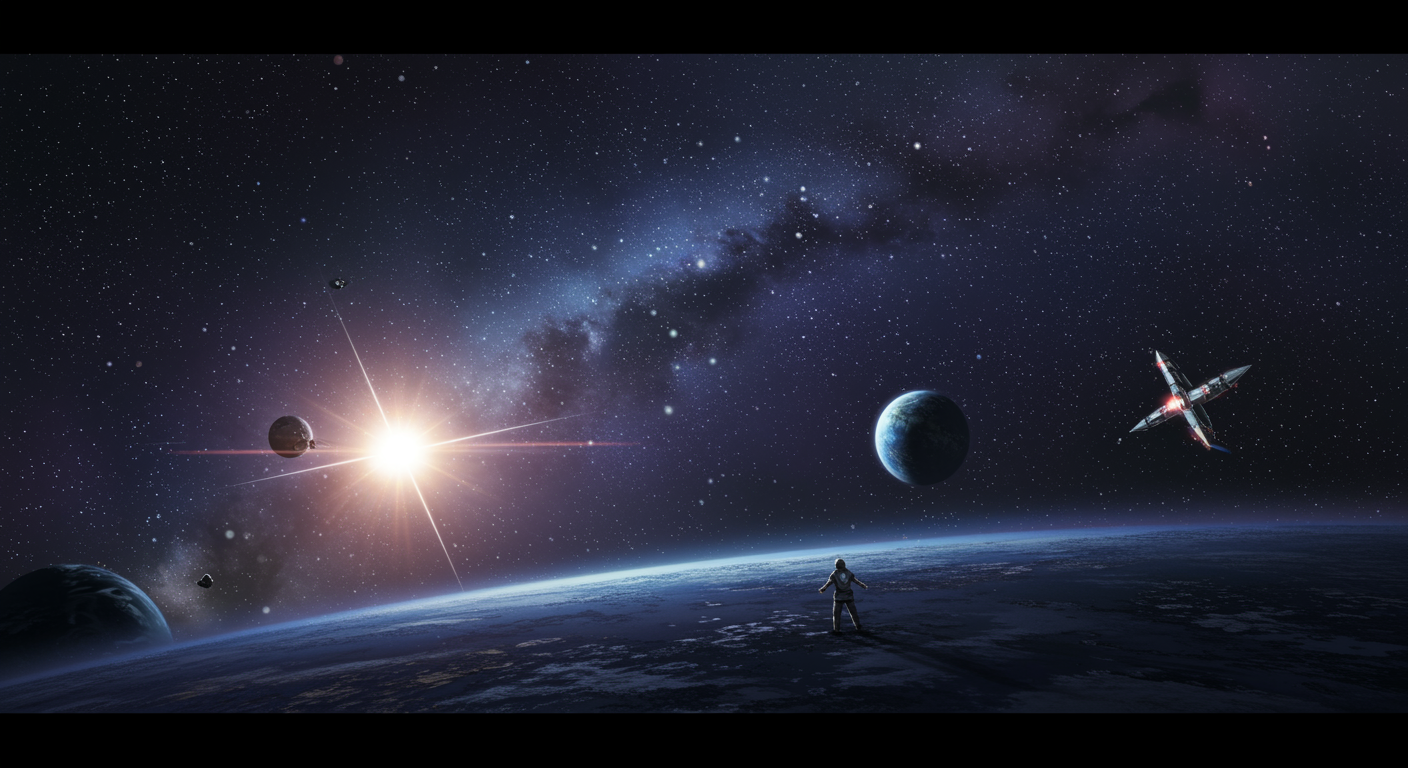
Imagine a situation where a fundamental measurement simply doesn’t fit. A discovery so unexpected it sends ripples through established understanding, prompting a re-examination of basic assumptions. For astronomers, one such moment arrived with a seemingly unassuming star, designated HD 140283. This celestial object, often referred to as the “Methuselah star” due to its extreme antiquity, once presented a profound cosmic paradox: its calculated age seemed to exceed the age of the universe itself.
For decades, our best models suggested the universe was approximately 13.8 billion years old, born from the event we call the Big Bang. Yet, early observations of HD 140283 hinted at an age closer to 14.5 billion years, or even older. This wasn’t just a minor discrepancy; it was a fundamental challenge to cosmology, suggesting either the star was a cosmic anomaly, or our understanding of the universe’s timeline, or even the star’s own life cycle, needed serious revision.
HD 140283 is not a massive, short-lived behemoth; it’s a subgiant, relatively close by at about 190 light-years from Earth in the constellation Libra. It moves rapidly across the sky, a tell-tale sign of its ancient origins, as it belongs to the Milky Way’s halo population — stars that formed before the galactic disk we inhabit today coalesced. What makes it particularly valuable for age determination is its composition: it’s very metal-poor. In astronomy, ‘metals’ refer to any element heavier than hydrogen and helium. These heavier elements are forged in the hearts of stars and dispersed through supernova explosions, enriching subsequent generations of stars. A metal-poor star like HD 140283 implies it formed very early, before much cosmic enrichment had occurred.
Determining a star’s age is not as straightforward as reading a birth certificate. Instead, astronomers rely on stellar evolution models. Stars like our Sun burn hydrogen into helium in their cores. As they age, their internal structure changes, affecting their temperature, luminosity, and size. By meticulously observing a star’s properties — its brightness, temperature, and chemical makeup — and comparing them to theoretical models of stellar evolution, scientists can estimate its age. The lower the ‘metallicity’ (proportion of elements heavier than hydrogen and helium), the earlier in the universe’s history a star likely formed. For HD 140283, its incredibly low metallicity strongly pointed to it being one of the oldest stars known.
Early estimates for HD 140283’s age, based on initial spectroscopic measurements and evolutionary models, placed it at an astonishing 14.5 billion years, with some analyses pushing it even higher. Consider the implications: a star apparently older than the entire cosmos it resides within. This contradiction forced astronomers and cosmologists to re-examine their assumptions. Was the cosmic distance ladder flawed, leading to an incorrect Hubble Constant and thus a wrong age for the universe? Or were the stellar evolution models for extremely old, metal-poor stars missing something crucial?
The resolution to this cosmic conundrum involved meticulous re-measurements and refinements in our understanding. First, more precise observations of HD 140283 were conducted, particularly using the Hubble Space Telescope’s Fine Guidance Sensors. These instruments allowed for an extremely accurate determination of the star’s parallax – its apparent shift against background stars as Earth orbits the Sun. Parallax is the most direct way to measure a star’s distance, and thus its intrinsic luminosity. A more accurate distance meant a more accurate luminosity, which is a critical input for stellar age models. Secondly, stellar models themselves were refined. Scientists incorporated new data on the rates of nuclear reactions within stars, the effects of convection, and the diffusion of elements within stellar interiors.
These updated measurements and models gradually narrowed the age estimate for HD 140283. By 2013, a team led by Howard Bond of Pennsylvania State University presented a revised age of 14.27 billion years, with an uncertainty of plus or minus 0.8 billion years. This revised range meant the star’s age was somewhere between 13.47 and 15.07 billion years. Crucially, the lower bound of this range, 13.47 billion years, now comfortably fit within the accepted age of the universe (13.8 billion years). While still one of the oldest objects we know, its age no longer outright contradicted the age of the cosmos.
The case of HD 140283, the Methuselah star, serves as a powerful illustration of the scientific process. It highlights how initial perplexing observations can drive deeper inquiry, pushing the boundaries of our measurement capabilities and refining our theoretical understanding. The discrepancy wasn’t a failure of science, but rather an opportunity for growth, forcing researchers to meticulously re-evaluate every parameter, from stellar distances to nuclear reaction rates.
This ancient celestial wanderer continues to offer insights into the very early universe, long before galaxies like our own fully formed. Its existence confirms that stars began to form relatively quickly after the Big Bang, offering a glimpse into the cosmic dawn. The meticulous work to determine its true age reinforces our confidence in both stellar evolution models and the cosmological timeline, painting a coherent picture of a universe that, despite its profound mysteries, largely makes sense to the measurements we can make.